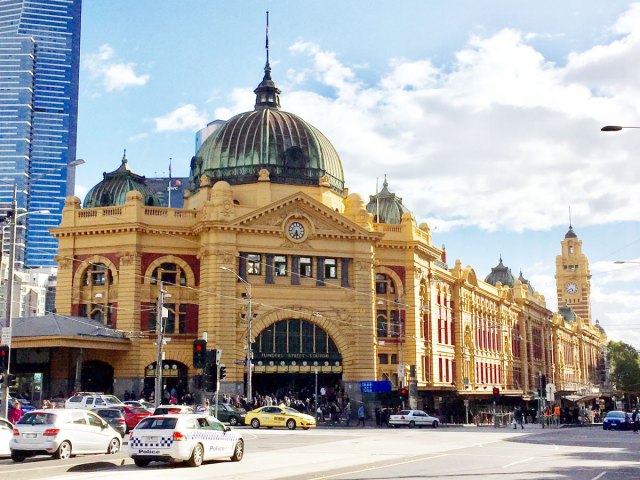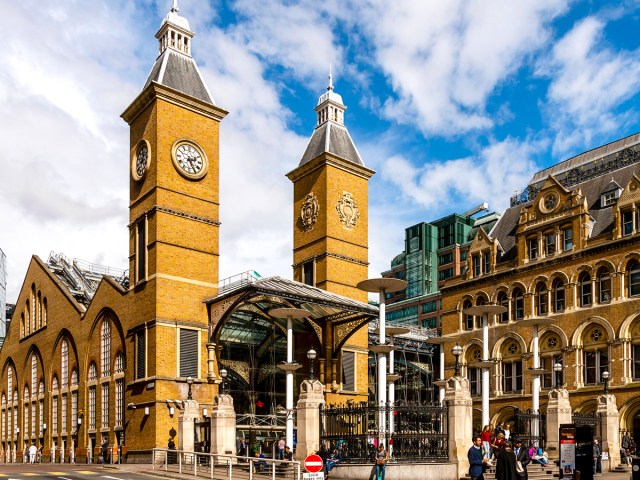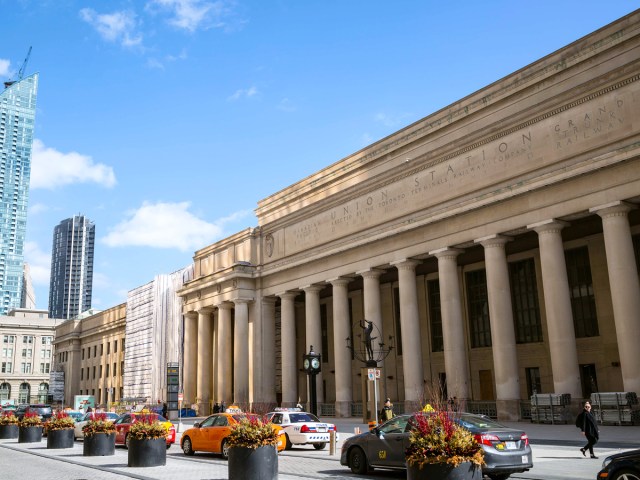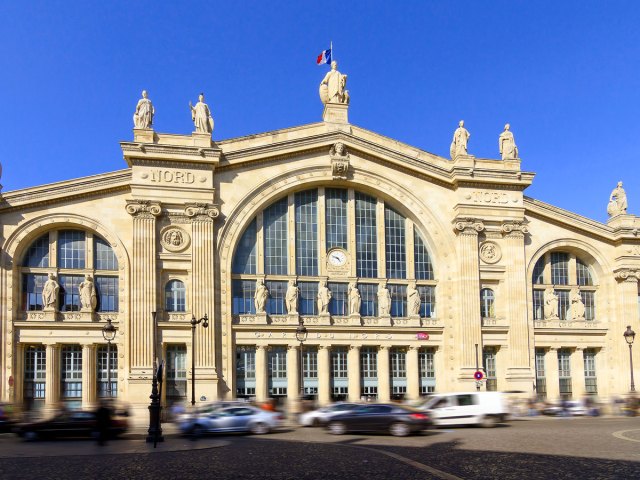Since the invention of the first steam locomotive in 1804, trains have played an important role in global transportation, helping to transport millions of people and millions of tons of cargo on a daily basis. Railway terminals are where they all intersect. Some comprise simple platforms and ticket offices, while others are sprawling modern concourses home to dozens of shops and restaurants. If you happen to thrive on the energetic and organized chaos associated with busy transport hubs, check out 15 of the busiest train stations around the world below, based on the latest available passenger traffic estimates from 2023 to 2024.
15. Flinders Street Station – Melbourne, Australia

Average annual passenger traffic: 40 million
Situated in Melbourne’s bustling Central Business District, Flinders Street Station is the busiest and oldest railway terminal in Australia. With around 110,000 passengers and 1,500 trains passing through every day, Flinders is also the busiest terminal in the entire Southern Hemisphere. Among the station’s 13 platforms is the 2,323-foot-long Platform 1, which ranks among the world’s longest platforms.
Completed in 1909, the striking terminal building features a yellow facade crowned by a green copper dome. Above the arched entrance is a series of 13 analog clocks that display the times of the next departing trains. According to local legend, a mixup with plans meant the building was erected according to a design intended for a station in Mumbai, which is why some say it features Indian-inspired design elements.
14. London Waterloo – London, England

Average annual passenger traffic: 62.5 million
The first trains were invented in Britain in the early 19th century, and it’s no surprise that London remains a hotspot for train travel today. Services run through the British capital’s network of geographical zones and connect to almost all corners of the United Kingdom. In fact, London is home to eight of the 10 busiest stations in the U.K. London Waterloo recorded over 62.2 million passengers entries and exits between April 2023 and March 2024.
Opened in 1848, Waterloo was popular in its early days with people traveling to horseracing events at Epsom Downs, south of the city in Surrey. In 1899, a 20-year redevelopment began to turn a once-dark and confusing labyrinth into an airy terminal with elegant Georgian and Edwardian design elements. One of the most striking features is found at the main entrance — the Victory Arch honors the 585 British railroad workers who served in World War I.
13. London Paddington – London, United Kingdom

Average annual passenger traffic: 66.9 million
London Paddington is the second-busiest station in the United Kingdom. Approximately 183,000 passengers enter or exit the station on a daily basis. They primarily use services operated by Great Western Railway, which connects commuters to destinations in west London, the Thames Valley region, Southwest England, and South Wales.
London Paddington is also one of the world’s oldest continuously operating train stations. Conceived as the London terminus of the Great Western Railway, it was officially completed in 1854. The iron-and-glass roof that covers the original 13 platforms is the work of acclaimed engineer Isambard Kingdom Brunel, who was inspired by the Crystal Palace, built in 1851 for London’s Great Exhibition.
12. London Liverpool Street – London, United Kingdom

Average annual passenger traffic: 94.5 million
Between March 2023 and March 2024, around 94.5 million passengers entered and exited London Liverpool Street station — equivalent to about 260,000 people each day. The latest figures marked an impressive increase of 17.5% over the previous year, largely due to the opening of the city’s new Elizabeth line.
Trains first departed from London Liverpool Street in 1874, replacing Bishopsgate as the London terminus of the Great Eastern Railway. Its 10 lines were fully operational by the following year, and foreign travel from the station began in 1893. For visitors to London, the station is conveniently close to Spitalfields Market, home to independent art, clothing, jewelry, and gourmet food stands.
11. Toronto Union Station – Toronto, Canada

Average annual passenger traffic: 109 million
Toronto Union Station welcomes an estimated 300,000 daily passengers, who travel on a combination of GO suburban trains, the TTC subway, Union Pearson Express airport rail link, and buses. Construction of the station started in 1914 and took 13 years to complete. Now a designated National Historic Site, Toronto Union is notable for its classical beaux-arts architecture. A row of 22 40-foot-tall limestone columns adorn the facade, and the interior floors are made of Tennessee marble.
The station is split into seven “neighborhoods,” each offering a unique retail and dining experience, and it also puts on a year-round schedule of events. “Unionale” is an art initiative inspired by the streets of Toronto that decorates the Union Market neighborhood. Passengers can also take advantage of free roller skating in the winter and Union Summer, a 60-day festival with food vendors and live music.
10. Zurich Hauptbahnhof – Zurich, Switzerland

Average annual passenger traffic: 172 million
There are 25 train stations located in Zurich, the biggest and busiest of which is Zurich Hauptbahnhof. It has 26 tracks, which serve around 471,300 daily passengers and almost 3,000 trains. The station opened in 1847, although the present-day neoclassical building dates to 1871. Its original purpose was as the terminus of the Spanisch Brötli Bahn, which was the first railway line in Switzerland and connected Zurich with Baden.
Public art is a prominent feature of the station’s halls. One of the most impressive works is Niki de Saint Phalle’s Nana, a huge and colorful guardian angel that watches over the main concourse. Opposite the terminal and set inside a neo-Gothic and Renaissance palace is the Swiss National Museum, which features exhibits of Swiss art, handicrafts, history, and more.
9. Hamburg Hauptbahnhof – Hamburg, Germany

Average annual passenger traffic: 200 million
Hamburg Hauptbahnhof is Hamburg’s most important railway terminal. Some 550,000 passengers use the station every day, making it among Europe’s most transited railway hubs. Opened in 1906, the terminal replaced several smaller city stations. It features a grandiose train shed inspired by the Galerie des machines, which was a pavilion showcased at the 1899 world’s fair in Paris. Today, there are 14 platforms, including eight for main line services, four for S-Bahn rapid lines, and six for U-Bahn subway lines.
Occupying two floors above the station’s east and west exits is the Wandhalle retail mall. It’s home to dozens of gourmet and fast-food options, in addition to specialty stores. Art exhibitions and free concerts often take place around the mall.
8. Gare du Nord – Paris, France

Average annual passengers: 220 million
Welcoming over 220 million passengers every year, Gare du Nord is one of the busiest train stations in Europe. A major gateway to the “City of Light” and northern France, it also serves as a hub for destinations in Belgium and the Netherlands. Plus, around 6.6 million passengers each year pass through the Eurostar Terminal, which connects to London via the Chunnel.
Not only a symbol of railway heritage, Gare du Nord is also a marvelous showcase of 19th-century architecture. Unveiled in 1846, the grandiose neoclassical facade is decorated with 23 sculptures by artists such as Charles Gumery and Jean-Joseph Perraud. They represent French and European cities once linked to Paris by the Chemin de Fer du Nord transport company.
7. Penn Station – New York, New York

Average annual passenger traffic: 230 million
Located beneath Madison Square Garden in midtown Manhattan, Penn Station (officially named Pennsylvania Station) sees a whopping 630,000 passenger entries and exits each day. This makes it the busiest station not only in the United States but also the entire Western Hemisphere.
Built and named after the Pennsylvania Railroad, the original station opened in 1910 and featured an ornate Beaux-Arts design. Reduced ridership numbers led to the station being decommissioned in 1963, after which the terminal was moved to its underground location. But in 2021, the stunning Moynihan Train Hall extension opened in a former post office building. In addition to welcoming passengers on Amtrak and Long Island Railroad (LIRR) services, the terminal features a food court with popular local eateries, various shops, and works from local artists.
6. Howrah Junction Railway Station – Kolkata, India

Average annual passengers: 365 million
India boasts one of the world’s largest railway networks, which covers over 7,000 stations and transports some 25 million daily passengers. On the banks of the Hooghly River, Howrah Junction Railway Station — one of India’s oldest stations — serves as the main transport hub for eastern India.
The first public train departed from here in 1854 on the short route to the district of Hooghly. Today, the station handles over 900 passenger trains and a million passengers each day. Inside the striking red brick building are 23 platforms, 10 of which can fit trains with over 24 coaches. Railroad enthusiasts can delve into the history and heritage of the Indian railways at the station’s Railway Museum.
5. Yokohama Station – Yokohama, Japan

Average annual passenger traffic: 766 million
Japan is one of the world’s leaders when it comes to train travel. The country’s annual rail ridership stands at an incredible 22.6 billion passengers. At Yokohama Station alone, around 2.1 million passengers take overground and underground services every day. The original terminal was unveiled in 1872 near Sakuragicho and connected the city with Tokyo. The current station opened in 1928.
Like many modern railway terminals, Yokohama Station doubles as a retail and dining district. The multistory JOINUS center, which has around 300 stores, and the underground Yokohama Porta shopping mall are both directly accessible from the station. It’s also a gateway to Tokyo’s bustling tourist zones, including the futuristic waterfront neighborhood of Minatomirai.
4. Ikebukuro Station – Tokyo, Japan

Average annual passenger traffic: 913 million
Located in the Toshima Ward of Tokyo, Ikebukuro Station has a long and fascinating history. It was inaugurated in 1903 as part of a line that transported coal to Tokyo. From the 1930s onward, major developments popped up around the station, eventually turning it into a commercial hub. Most were department stores, such as Kikuya Department Store (currently Seibu Ikebukuro Main Store) and Tobu Department Store.
Today, Ikebukuro Station welcomes approximately 2.5 million passengers on a daily basis. They travel on eight lines serving the Tokyo metropolitan region and its major airports. At the west exit is Ikebukuro Nishi-guchi Park, a contemporary public plaza with an open-air theater, giant television screen, and fountains. Also nearby is the Tokyo Metropolitan Theatre, which stages dance, music, and other performing arts productions.
3. Shibuya Station – Tokyo, Japan

Average annual passengers: 1.1 billion
With cutting-edge designs and high-speed trains, Japan has mastered the art of train travel. That’s particularly evident at Shibuya Station. One of the biggest train stations in the world, it serves as the gateway to the Shibuya City financial district, one of Tokyo’s 23 wards. The bustling station handles an estimated 3 million passengers on a daily basis, many of whom arrive from the western and southern areas of Tokyo.
An enormous and sprawling complex, Shibuya Station consists of three aboveground and two underground terminals, plus a long underground pedestrian passage. Among the four main entrances is the Hachiko Gate, which features the statue of a famously loyal Akito dog named Hachiko, who reportedly waited at the station for his owner each day for nine years after his passing. Once exiting the station, passengers will find themselves amid the neon lights and skyscrapers of Shibuya Crossing, often referred to as Tokyo’s Times Square.
2. Chhatrapati Shivaji Maharaj Terminus – Mumbai, India

Average annual passenger traffic: 1.1 billion
Chhatrapati Shivaji Maharaj Terminus, one of Mumbai’s standout architectural landmarks, is India’s busiest railway station. An estimated 3 million passengers use the station every day, traveling on both intercity and long-distance services. The station, which has a total of 18 platforms, has been featured in many movies, including 2008’s Slumdog Millionaire.
The building is a UNESCO World Heritage Site and was designed by British architect Frederick William Stevens. It combines classic Indian temple features with Victorian Italianate Gothic Revival styles. Crowning the central dome is Progress, a marble statue portraying a woman holding a torch and spoke wheel that represent knowledge and progress.
1. Shinjuku Station – Tokyo, Japan

Average annual passengers: 1.3 billion
Situated in the Shinjuku City district of Tokyo, Shinjuku Station claims the top spot as the busiest railway station in the world. An incredible 3.6 million passengers use the terminal every day to board services operated by five different railway companies. To accommodate such high passenger numbers, the station is equipped with 200 entrances, 36 platforms, and 12 train lines.
Beyond being a transport terminal, the station connects to several shopping malls. Visitors will also find Tokyo attractions like Shinjuku Central Park and the famed Golden Gai nightlife district within a short walk of Shinjuku Station.
More from our network
Daily Passport is part of Inbox Studio, which publishes content that uplifts, informs, and inspires.
















